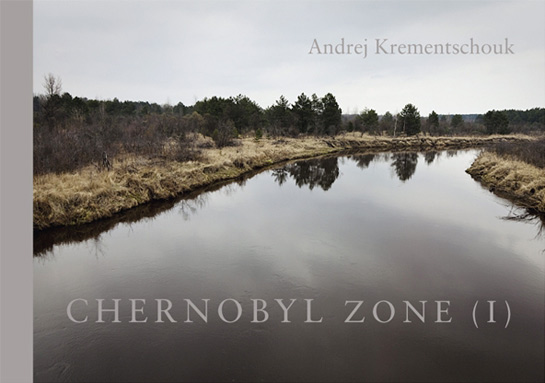Review: Chernobyl Zone (I) by Andrej Krementschouk

Twenty-five years ago, in what was then the Soviet Union (now: Ukraine) the Chernobyl Nuclear Power Plant exploded, releasing massive amounts of radiation into the environment and leaving large areas contaminated. At first, the news leaked rather slowly to the West where the nuclear industry, along with politicians, were quick to point out that an accident like that could not happen with their reactors. Earlier this year, as a consequence of a massive earthquake and the resulting tsunami, four Japanese power plants suffered from a catastrophic core meltdown. The full extent of the damage at the Japanese plants is still unknown. But the daily news updates indicate rather serious problems at at least one of the reactors whose containment vessel (which is intended to keep the highly radioactive material away from the environment) seems have ruptured. There are three chilling similarities between Chernobyl and Fukushima: First, the operators of the plants have been very unwilling to inform the public about the extent of the damage. Second, in both cases a large area of land now seems heavily contaminated with radioactivity. Third, the nuclear industry’s mantra is “It can’t happen here.” I’m writing this review less than forty miles (downstream) from the Vermont Yankee Nuclear Power Plant, a reactor whose design matches the Fukushima ones. (more)
It’s easy to see how nuclear power has obvious advantages: It’s clean. And you can’t see, smell, hear or feel radioactivity. Given the planet’s atmosphere is heating up at an alarming rate, nuclear power seems like a safe bet. However, nuclear power also has some disadvantages: The problem what to do with the nuclear waste material is unsolved. It currently cannot be recycled so it needs to be stored somewhere safe for tens of thousands of years. Accident can potentially be catastrophic (see Chernobyl or Fukushima). And you can’t see, smell, hear or feel radioactivity. The decision for or against nuclear power thus come down to deciding whether the pros outweigh the cons or not.
Given that twenty-five years have passed since the Chernobyl disaster, the contaminated neighbouring areas have become both a tourist attraction and a unique laboratory for scientists: What happens in a radioactively contaminated landscape? The images from abandoned towns near the reactor are well known, the landscape itself and its evolution less well so. There is a fascinating article in the June 2011 issue of Harper’s (subscription required) about the zone, written by Steve Featherstone. For those who prefer to look at photographs (or who’d like more photographs along the essay) there now is Andrej Krementschouk’s Chernobyl Zone (I).
First of all, you will probably be disappointed by the book if you expect to see a strangely mutated wasteland, something you’d maybe expect to see on some other planet. Apart from some ruins, the photographs look like something that could have been taken in many other parts of at least the former Soviet Union. The second surprise might be that there are people and animals living there. The people are not supposed to live there, but they do so anyway. It’s mostly elderly people who would rather die where they had been living before the reactor blew up instead of resettling somewhere else. And even though many of them look rather ravaged it’s hard to tell whether it is due to radiation or due to alcohol abuse or similar/related causes.
So why the big fuss about the zone then? Why evacuate people? Well, as it turns out - read the Harper’s article - things are rather more complex than the simple picture of a nuclear wasteland would imply. From Featherstone’s article:
A crosshatch pattern of scorched trees lay in the rough grass, and more blackened trunks stood out like rotten teeth amid stands of white birch saplings. These were remnants of the “real” Red Forest, a large tract of evergreens adjacent to the Chernobyl reactor that got hit by the worst of the fallout. […] Soviet liquidators razed the forest, sprayed the area with a polymer to keep radioactive dust from blowing around, and replanted it. The natural forces of decay and regeneration had been subverted. I stopped next to a thirty-foot Scots pine resting on the ground. After twenty-five years, its black branches were still perfectly intact, as if it had been dipped in pitch and laid out to dry. In a healthy forest, the tree would’ve been a heap of mulch. Radiation, Tim and Anders hypothesized, had effectively mummified it by inhibiting microbial decomposition.We know that large doses of radiation will kill us, and we also know that radioactivity causes cancer and birth defects. But the details we don’t know. That’s why I referred to the Chernobyl zone as a laboratory: Scientists literally go to see what is happening to learn how harmful radioactivity is.
As it turns out photographing its effects in the Chernobyl zone is complicated. Photography, we are often told, has to be able to work without explanations or text. There are cases where this is true, and there are cases where this is wrong. Chernobyl Zone (I) seems like one of those cases where it is wrong. This is not to blame the photographer, the photography, or the publisher for any shortcomings. When it comes to complex situations such as what has been going on inside the Chernobyl exclusion zone, photography is not quite as telling a tool as we might expect. This only enhances its mystery. The book thus leaves the viewer with a lot of questions, which is, of course, what a good photobook should do.
Chernobyl Zone (I), photography by Andrej Krementschouk, 120 pages, Kehrer Verlag, 2011